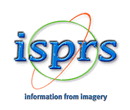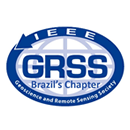The role of vegetation cover indexes in urban areas: a contribution based on Landscape Ecology using Sentinel-2 satellite images
Autores
1Moura, A.C.; 2Rocha, N.; 3Sena, ; 4Kechagioglou, X.
1UFMG Email: anaclara@ufmg.br
2UFMG Email: nicarocha.jf@gmail.com
3UFMG Email: italosena@gmail.com
4UNICA Email: xeni@unica.it
Resumo
Access to spatial data is becoming more and more possible, although with huge territorial differences related to economic inequalities, lack of policies and awareness of the role of data in planning. Data can be transformed into information using models, based on representation of vulnerabilities and attractiveness of the places. This paper defends the importance of free access to data, using as example Copernicus Project that allows citizens to use Sentinel remote sensing images from Europe. Using Sentinel-2 images the study composes data about land use in cities, with emphasis in vegetation cover. It presents the possibility of using the metrics of Landscape Ecology, mainly the edge effect, to measure the relation between built and green landscape in urban areas. As a result, it criticizes the possibilities of producing rankings, because local conditions and values are not considered. It points out about the possibilities of using some metrics based on Landscape Ecology to analyze the balance between built and green landscape, as a support to propose new urban indexes, with relative values according to local characteristics. Studies about land use metrics in Landscape Ecology have the goal to apply measures and to propose limits and references, searching for the ideal conditions of each reality. The measurement of metrics aims to select the most appropriate fragments for environmental preservation and to compose the spatial arrangements to achieve biodiversity, the balance of species and the gene flow, involving the study of patterns and the interaction between patches within the landscape mosaic (FORMAN e GODRON, 1986; METZFER, 2001; COUTO, 2004; FONSECA et al., 2015; BORGES et al., 2010; ROCHA et al., 2016). According to Landscape Ecology, the ideal fragment has a good shape index, big enough to present a protected core, and not far from other fragments to conform an ecological corridor. Some fragments don’t satisfy all conditions, but may play a specific role in fragments network (FORMAN e GODRON, 1986). The main metrics for urban studies are core area, inscribed circle, border effect, size, shape index, the degree of isolation and connectivity between fragments (Rocha et al., 2016). For this study, it was used the metric "edge effect", that makes possible to calculate the shape index of the fragment: whether if it has many branches or it is more compact. It is measured by the relation of perimeter/area, to indicate the complexity of the shape. The bigger the relation perimeter/area is, the more significant is the contact between different uses in the borders. To illustrate the discussions, it presents the case studies of Nice (France), Cagliari (Italy), Athens (Greece), Prague (Czech Republic). The goal was to face different urban conditions, from metropolitan to medium size area, from very dense to spread density, from large to medium population, with different proportions of green areas. It was used Copernicus Sentinel data, from the European Space Agency’s (ESA) SENTINEL-2 mission. Copernicus, named after the astronomer Nicolaus Copernicus, is the European Union’s earth observation and monitoring program that provides global satellite, ground-based, airborne and seaborne data, in near real time. All data is free and open through its European public funded services, developed, among others, to serve urban and regional planning through support for sustainable management and resilience. ESA is responsible for the SENTINEL satellite missions, with the second one, SENTINEL-2, consisting in twin satellites phased at 180o and a revisit frequency of five days at the Equator. The methodology started selecting cities that have different characteristics in terms of dimension, population, presence of green areas, density and spread of urban plots. Sentinel-2 images are captured by a satellite equipped with an MSI (multi-spectral instrument), a sensor which generates data in 13 spectral bands, from which the bands of 10 m resolution were used: 2, 3, 4 and 8. They were composed in the bands of 10 m resolution, visual composition (RGB432) and near infrared composition (RGB843) to highlight vegetation cover. NDVI (Normalized Difference Vegetation Index) was calculated and classified according to 4 types of land use, using local references as limits for the value ranges: (a) Without vegetation, composed by exposed soil, buildings or water; (b) Buildings and/or low occurrence of vegetation, grass; (c) Buildings and/or occurrence of medium vegetation, scrubby; (d) Dense vegetation, mainly woody, robust. Once produced land use maps, studies about metrics were applied, beginning from identifying the main built fragment. It was calculated the metrics of each fragment, total area of each typology of land use, perimeter of main built fragment, relation perimeter/area of main built fragment, area of the administrative limits, relations built and green fragments, relations about population density. The results in each city were analyzed and the cities were compared, to present a discussion about indexes. The main discussion was about the problems of using general indexes to construct rankings, questioning in which conditions some of those indexes could be used, and what are the main problems related to indexes. Even criticizing some general indexes and the logic of rankings, it was possible to understand that studies about the relation between built and green landscape must be done, to develop some specific urban indexes that could be included in Master Plans. As future developments, the research points out to the importance of separating vegetation cover according to uses, as green infrastructure used as recreational areas, or even as areas to be protect due to environmental fragilities due to risks and clime changes.
Keywords
Vegetation Cover Indexes; Landscape Ecology; Sentinel-2










